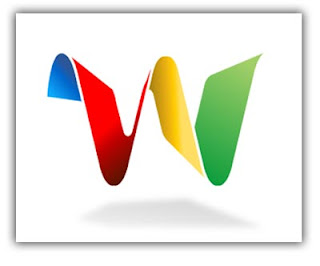But can it wash the dishes, answer the phone and get rid of all my spam...
 Edited version from Bob Moss blog post.
Edited version from Bob Moss blog post.
 Edited version from Bob Moss blog post.
Edited version from Bob Moss blog post.If you have not checked out Wave (invitation only, since September this year) you are missing out on one of the coolest and probably most innovative collaboration tool available on the market today..
Oh yea... it FREE too!
Wave is a revolutionary new way to keep in contact with people and collaborate on documents and could completely replace email. The theory is that email is beginning to look a little antiquated, especially when we could be using the features of Web 2.0 with 'waves'.
What exactly is 'waves'?
A wave is best compared to a conversation in an instant messenger, but in the case of a wave, you can chat to yourself or to a whole group of people. Each wave contains a subwave called a 'wavelet', which focuses on a particular aspect of the main wave, and can be manipulated in much the same way. This means one wave can branch out into a number of other waves, but keep all the original associations. Each wavelet contains entries, known as 'blips', posted by the various collaborators, extension apps, or even automated robots you converse with. These can contain anything, including text and video, and mean that your wave becomes diverse and dynamic, with content that's constantly updated, either from an external source or your fellow collaborators. A document, in wave terms, contains the content of each blip. You slowly build up and manipulate the various blips to produce in-depth conversations or collaborative papers. You can then embed your wave document into a webpage, so it can act like an interactive and automatically updating wiki. It's also possible to export everything into a final file for printing or sending to your fellow collaborators.
Spell checking that think for you.
You are less likely to suffer from spelling mistakes or grammatical errors than you would with a wiki, thanks to Google's innovative natural language tools. These adapt depending on the context of your writing, and pick the most likely suggestion when it compares against the text that came before. This means you could type "I have bean eating beens" and have this automatically corrected to the sentence you expected as you type, without the need for any further intervention.
Waves have full support for you to drag and drop files, text snippets or any web content. This will automatically be added to your document as a blip. This makes things much more interactive. As expected, you can also embed other Google services such as calendars, YouTube video, Picasa images and so on into your waves. As a document creator, only the people you explicitly specify as collaborators can alter your work. You can remove collaborators at any time and cycle back through the changes they might have made.
Expect lots of great new plug-ins and applets
Google has open-sourced the open-transport layer as well as large swathes of the main code, so developers can build their own extensions using the Wave API. One such extension enables you to embed Twitter feeds into a document, thereby creating a 'twave' and enabling real-time communication over another protocol while still integrating seamlessly into the interface. This can then be extended by programming robots. Developers can program robots that create blips and respond in particular ways to content in other waves and external websites. They can even respond to you sending them messages, which means you can ask your robot for the latest sports scores and be told instantly. To include your robot in any wave, just add it as a collaborator, and off you go.
OK so how do you get a Wave Invitation. Find someone who has a Gmail account and ask them. If they are using their Gmail account properly they already have a Wave account setup and it not then they will thank you when they get all set up in Google Wave.
More great info:
Complete guide Blog on Google wave



No comments:
Post a Comment